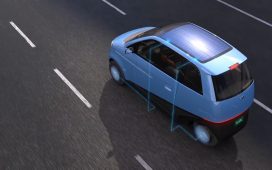REVERSE bay parking can be difficult for learners and experienced drivers alike.
However, all drivers will have to learn this skill at some point so here is a step-by-step guide on how to be confident when reverse bay parking.
What is a reverse bay park?
There is no legal size for a parking bay in the UK but they are generally 2.4 metres wide by 4.8 metres long, with six metres manoeuvring space.
They might seem small, but they are big enough to fit most cars and vans.
Parking bays are a common sight at supermarkets, hospitals and, of course, multi-storey car parks.
Often it is better and easier to manoeuvre your car into a bay by reversing.
Will a reverse bay park be part of my driving test?
Your examiner will ask you to carry out at least one manoeuvre during your driving test.
There are four manoeuvres in total, including reverse parallel park, forward bay park, pull up to the right and reverse, and reverse bay park.


They will choose the manoeuvre at random, meaning you may be asked to do the reverse bay park.
But don’t worry, there are a few tips and tricks to make sure you will ace reverse bay parking in your test.
How to reverse bay park
If your examiner asks you to reverse bay park, you get to decide which bay you want to park in.
The bays will usually be empty during your test which means you can generally choose any space.
So, first things first, make sure you choose a space that you feel comfortable reversing into and check there are no hazards.
Then, pull up around two car lengths away from the bay you have chosen and indicate whichever way you are parking.
Next, put the car in reverse and (if you are turning right into the space) begin to turn when the right-hand line of your bay lines up with your right wing mirror.
Then, full-lock your steering wheel to the right and slowly reverse into the space.
Make sure you are always checking your mirrors and blind spots.
When you can see in your wing mirrors that your vehicle is within both lines of the bay, you can straighten your steering wheel.


Edge back slowly, making sure you don’t hit anything behind you.
Then, bring the car to a stop.






